|
|
Updated as per
AN ANNOTATED CHECKLIST OF THE SPHINGIDAE OF BOLIVIA, October 2007
Updated as per Sphingidae (Lepidoptera) de Venezuela, Compilado por: María Esperanza Chacín; December 2009
Updated as per CATE (La Oroya, Junin, Peru); February 11, 2011
Updated as per personal communication with Attila Steiner (San Pedro, Cusco, Peru, July 2010); June 7, 2011
Updated as per personal communication with Hubert Mayer (Rio Hollin, Napo, Ecuador; November); August 9, 2011
|
Adhemarius tigrina tigrina
ad-heh-MAHRR-ee-usmmtye-GREE-nuh
(R. Felder, 1874)
Ambulyx
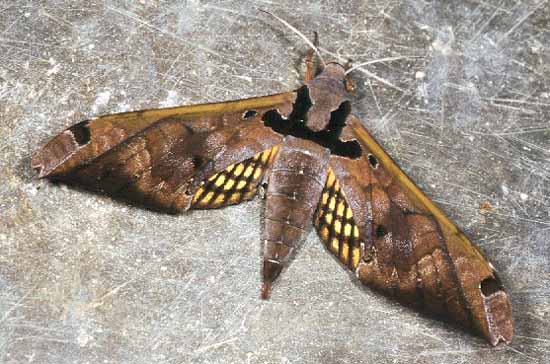
Adhemarius tigrina tigrina
This site has been created by
Bill Oehlke at oehlkew@islandtelecom.com
Comments, suggestions and/or additional information are welcomed by Bill.
| TAXONOMY:
Superfamily: Sphingoidea, Dyar, 1902
Family: Sphingidae, Latreille, 1802
Subfamily: Sphinginae, Latreille, 1802
Tribe: Smerinthini, Grote & Robinson, 1865
Genus: Adhemarius, Oicitica, 1939
Species: tigrina tigrina, (R. Felder, 1874) |
MIDI MUSIC
"What.A.Wonderful.World"
copyright C. Odenkirk
MIDI CITY
ON.OFF
<bgsound src="world.mid" LOOP=FOREVER>
|
DISTRIBUTION:
Adhemarius tigrina tigrina
(forewing length: 57 - 63mm) flies from
Peru: Junin: Le Oroya (3745m); Cusco: San Pedro (AS); Puno: Carabaya; (Oxapampa, Chanchamayo (HM)) to
Ecuador: (Napo: Rio Hollin (HM));
Venezuela: Aragua, Barinas, Distrito Federal, Lara, Merida, Tachira.
It also has been recorded in
Bolivia:
La Paz (750m).
If my identification of the following moth is correct, it also flies in northern part of the Central Cordillera in
Colombia. In the Western Cordillera it is replaced by Adhemarius tigrina coronata. Possibly the moth below from the Central Cordillera
is subspecies Adhemarius tigrina coronata.
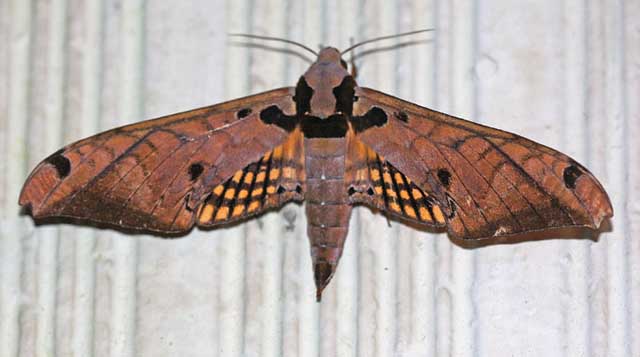
Adhemarius tigrina tigrina, Central Cordillera, Colombia,
1600m, courtesy of Joakim Johansson.
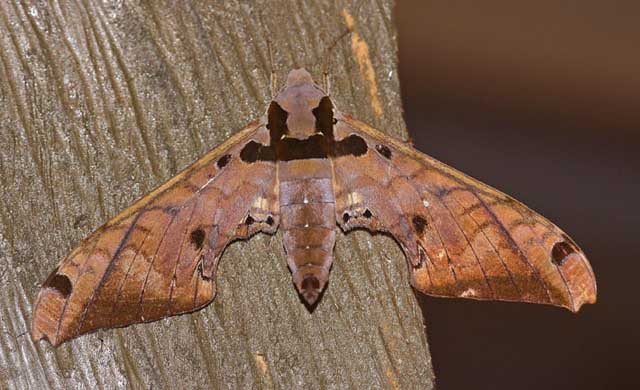
Adhemarius tigrina tigrina, Central Cordillera, Colombia,
1600m, courtesy of Joakim Johansson.
A. tigrina is similar to Adhemarius sexoculata, but
the hindwing subapical spots on veins CuA2 and 1A are (in tigrina) small (not forming "eyespots"), black with a narrow white margin, with a minute one in a similar
position on the remnant of vein CuP). The hindwing basal area is yellow (pink in Adhemarius sexoculata) with three distinct bands of quadrangular yellow
patches. In Adhemarius sexoculata the middle and outermost of the three bands of yellow patches are merge longitudinally into streaks.
The hw underside has a prominent, nearly straight transverse median line. CATE
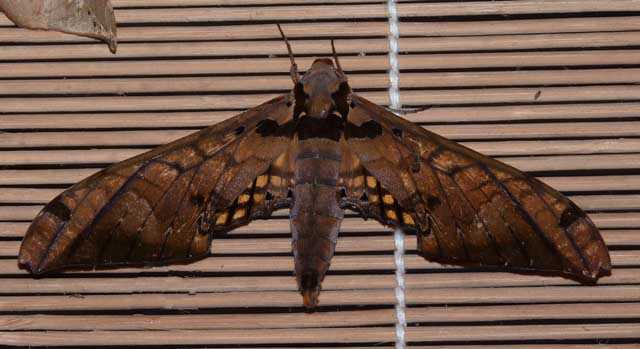
Adhemarius tigrina, San Pedro, Cusco, Peru,
July 2010, courtesy of Attila Steiner.
FLIGHT TIMES AND PREFERRED FOOD PLANTS:
Adhemarius
tigrina tigrina has at least two broods each year with peak
flights in February and again in July-August. Hubert Mayer reports a November flight in Napo, Ecuador, as well as a
July flight in Oxampampa, Peru.
Adhemarius tigrina tigrina larvae probably feed upon
Ocotea veraguensis, Ocotea atirrensis, Ocotea sarah
and Ocotea dendrodaphne.
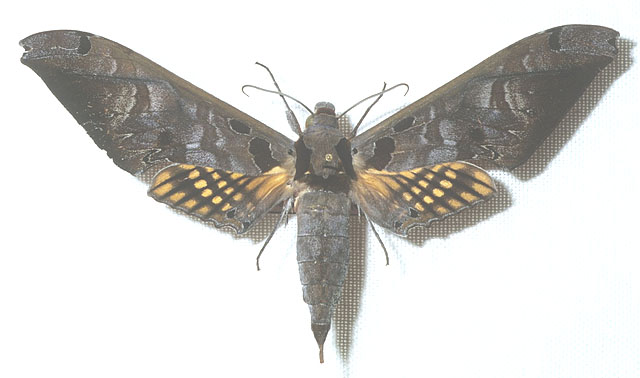
Adhemarius tigrina tigrina male, courtesy of
Hubert Mayer copyright.
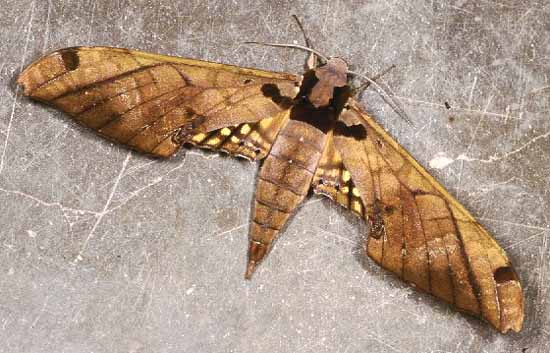
Adhemarius tigrina tigrina
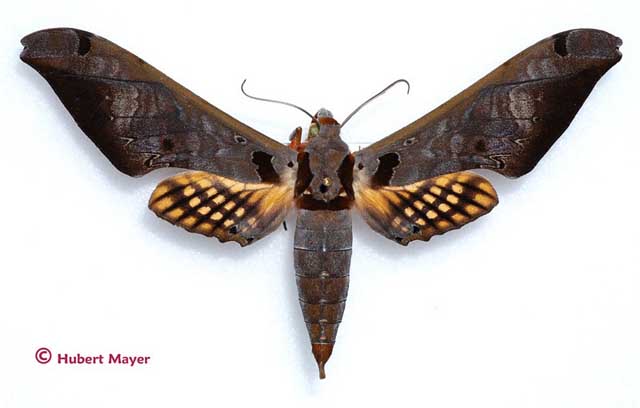
Adhemarius tigrina male, Rio Hollin, Napo, Ecuador,
November 23, 1998, courtesy/copyright of Hubert Mayer.
Visit series of Adhemarius tigrina, courtesy of Hubert Mayer.
ECLOSION, SCENTING AND MATING:
Females exude a pheromone
from the tip of the abdomen into the night
sky to call in the males.
EGGS, LARVAE AND PUPAE:
Larval Food Plants
Listed below are primary food plant(s) and alternate food plants. It is hoped that this
alphabetical listing followed by the common name of the foodplant will
prove useful. The list is not exhaustive. Experimenting with closely
related foodplants is worthwhile.
Return to Smerinthini Tribe
Return to Main Sphingidae Index
Use your browser "Back" button to return to the previous page.
This page is brought to you by
Bill Oehlke and the
WLSS. Pages are on space rented from Bizland. If you would like
to become a "Patron of the Sphingidae Site", contact Bill.
Please send sightings/images to Bill. I will do my best to respond to
requests for identification help.
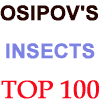 | 
Show appreciation for this site by clicking on flashing butterfly to the left.
The link will take you to a page with links to many insect sites. |








